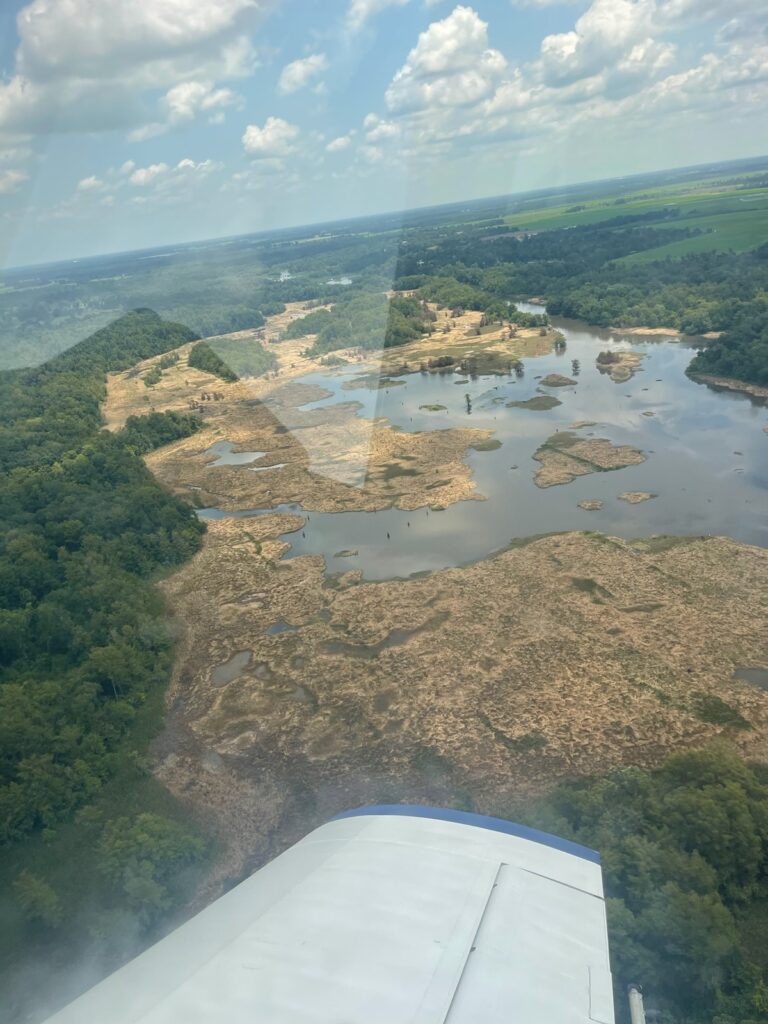NOVEMBER 2023
Treatment of Cuban bulrush (Oxycaryum cubense) is complete for 2023 and will resume in the Spring when the invasive is most susceptible to effective treatment. The involvement of the State of Georgia via the Department of Natural Resources was crucial for the success of this initiative. The $150,000 resulted in the treatment of over forty (40) miles of shoreline infestation and four (400) hundred acres. The spraying of upper Spring Creek, via helicopter and airboats, was very effective in slowing/stopping floating invasives from blocking recreational access and contamination of other areas of the lake. Mechanical removal of the invasives by three different methods was also evaluated. Mechanical removal allows for excessive biomass to be removed from the lake reducing sediment buildup and creating the opportunity for more effective treatment methods later. Seminole County Commissioners have voted to provide an Aquatic Excavator for use by the Stewards to further attack and maintain areas devastated by these invasives. Stewards of Lake Seminole will seek additional funding from the State to continue the fight to stop this and other invasives and reclaim thousands of acres which have been lost. The attached photos show the excavator and area behind 10 Mile Island, previously choked off, that was reclaimed during an eight (8) day trial. Natural water flows, and fisheries and wildlife habitats have been restored.
JULY 16TH, 2023
The Cuban Bulrush Task Force was formed on December 13th, 2022, at a meeting with Colonel Jeremy Chapman in Mobile, AL. The purpose was to attack the invasion of Cuban bulrush (Oxycaryum cubense) after hurricane Michael. The task force consists of three entities, U.S.A.C.E., Stewards of Lake Seminole, and the Georgia Department of Natural Resources.
These entities have worked in coordination to allocate funding, set target priorities and implement cost effective corrective actions. Georgia, through the efforts of our representatives, senators, and a thousand Stewards and supporters, has allocated $150,000 to the Department of Natural Resources to assist with this important initiative. Results to date include:
Collaborative results include aerial spraying, via helicopter, of 150 acres north and south of Hwy 253 bridge on Spring Creek. This area is the source of invasives flowing down Spring Creek, blocking residential and recreational access and spreading invasive into the lake. This area had been in accessible for treatment in the past because of all the water hazards. This was the first use of a helicopter on the lake and was very efficient and cost effective.
Follow up spraying began July 5th and will continue with two boats working the week of July 16th and targeting infestations in the Flint River.
Mechanical removal, another first, will begin in August for areas along the Flint River. This combined effort will target 250 acres of invasives, which will encompass approximately 30 miles of shoreline along the Flint River.
Cuban bulrush chokes out fish spawning areas and the habitat for native species. These efforts will restore hundreds of acres of fish and wildlife habitat for anglers and hunters. The success of this effort is largely due to the responsiveness of the State of Georgia. Georgia, we thank you for your support!

Or email us at [email protected].
Website design, hosting and maintenance by WPTallahassee.